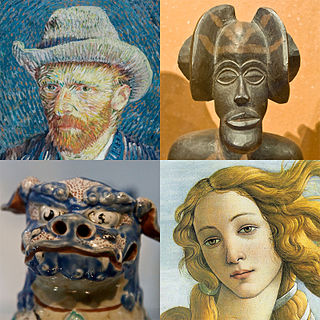
Art is a diverse range of human activity and its resulting product that involves creative or imaginative talent generally expressive of technical proficiency, beauty, emotional power, or conceptual ideas.

A museum is an institution dedicated to displaying and/or preserving culturally significant objects. Many museums have exhibitions of these objects on public display, and some have private collections that are used by researchers and specialists. Compared to a library, a museum hosts a much wider range of objects and usually focus around a specific theme such as the arts, science, natural history, local history, and other topics. Public museums that host exhibitions and interactive demonstrations are often considered to be tourist attractions, and many museums attract large numbers of visitors from outside their host country, with the most visited museums in the world regularly attracting millions of visitors annually.

Performance art is an artwork or art exhibition created through actions executed by the artist or other participants. It may be witnessed live or through documentation, spontaneously developed or written, and is traditionally presented to a public in a fine art context in an interdisciplinary mode. Also known as artistic action, it has been developed through the years as a genre of its own in which art is presented live. It had an important and fundamental role in 20th century avant-garde art.
Public art is art in any media whose form, function and meaning are created for the general public through a public process. It is a specific art genre with its own professional and critical discourse. Public art is visually and physically accessible to the public; it is installed in public space in both outdoor and indoor settings. Public art seeks to embody public or universal concepts rather than commercial, partisan, or personal concepts or interests. Notably, public art is also the direct or indirect product of a public process of creation, procurement, and/or maintenance.

The Kitchen is a non-profit, multi-disciplinary avant-garde performance and experimental art institution located at 512 West 19th Street, between Tenth and Eleventh Avenues in the Chelsea neighborhood of Manhattan, New York City. As the organization undergoes a multi-year renovation it is currently sited at a satellite loft space in the West Village located at 163B Bank Street, where exhibitions and performances are regularly held. It was founded in Greenwich Village in 1971 by Steina and Woody Vasulka, who were frustrated at the lack of an outlet for video art. The space takes its name from the original location, the kitchen of the Mercer Arts Center which was the only available place for the artists to screen their video pieces. Although first intended as a location for the exhibition of video art, The Kitchen soon expanded its mission to include other forms of art and performance, and incorporated as a not-for-profit arts organization in 1973. In 1974, The Kitchen relocated to a building at the corner of Wooster and Broome Streets in SoHo. In 1987 it moved to its current location.
The Woman's Building was a non-profit arts and education center located in Los Angeles, California. The Woman's Building focused on feminist art and served as a venue for the women's movement and was spearheaded by artist Judy Chicago, graphic designer Sheila Levrant de Bretteville and art historian Arlene Raven. The center was open from 1973 until 1991. During its existence, the Los Angeles Times called the Woman's Building a "feminist mecca."

The Center for Brooklyn History is a museum, library, and educational center founded in 1863 that preserves and encourages the study of Brooklyn's 400-year history. The center's Romanesque Revival building, located at Pierrepont and Clinton Streets in Brooklyn Heights, was designed by George B. Post and built in 1878–1881 by David H. King Jr., is a National Historic Landmark and part of New York City's Brooklyn Heights Historic District. The CBH houses materials relating to the history of Brooklyn and its people, and hosts exhibitions which draw over 9,000 members a year. In addition to general programming, the CBH serves over 70,000 public school students and teachers annually by providing exhibit tours, educational programs and curricula, and making its professional staff available for instruction and consultation.

The Asian Cultural Council (ACC) is a non-profit organization dedicated to advancing international cultural exchange between Asia and the U.S. and between the countries of Asia through the arts. Founded by John D. Rockefeller III in 1963, ACC has invested over $100 million in grants to artists and arts professionals representing 16 fields and 26 countries through over 6,000 exchanges. ACC supports $1.4 million in grants annually for individuals and organizations.

Collective:Unconscious is a non-profit corporation, founded in New York City in 1993, and incorporated in 1995. Originally based on Avenue B in Alphabet City, it moved to 145 Ludlow Street on Manhattan's Lower East Side; in 2004 it relocated to Tribeca until July 2008.
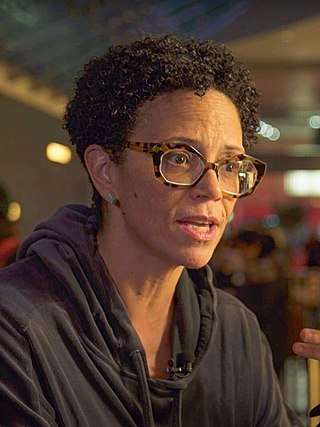
Coco Fusco is a Cuban-American interdisciplinary artist, writer, and curator whose work has been exhibited and published internationally. Fusco's work explores gender, identity, race, and power through performance, video, interactive installations, and critical writing.
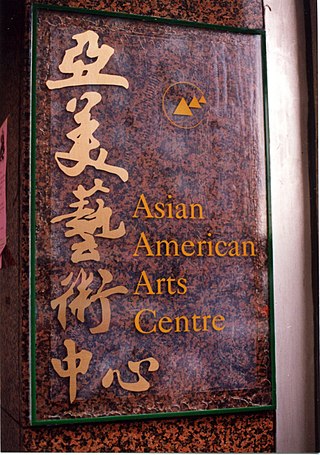
The Asian American Arts Centre (AAAC) is a non-profit organization located in the Chinatown neighborhood of Manhattan in New York City. Founded in 1974, it's one of the earliest Asian American community organizations in the United States. The Arts Centre presents the ongoing developments between contemporary Asian & Asian American art forms and Western art forms through the presentation of performance, exhibitions, and public education. AAAC's permanent collection, which it has accumulated since 1989, contains hundreds of contemporary Asian American art works and traditional/folk art pieces. The organization also has an Artists Archive which documents, preserves, and promotes the presence of Asian American visual culture in the United States since 1945. This includes the East Coast, especially the greater New York area; the West Coast; and some artists in Canada, Hawaii, and overseas. The artists include Asian Americans producing art, Asian artists who are active in the United States, and other Americans who are significantly influenced by Asia. Pan-Asian in outlook, the Arts Centre's understanding of 'Asia' encompasses traditions and influences with sources ranging from Afghanistan to Hawaii.

Asia Art Archive (AAA) is a nonprofit organisation based in Hong Kong which focuses on documenting the recent history of contemporary art in Asia within an international context. AAA incorporates material that members of local art communities find relevant to the field, and provides educational and public programming. AAA is one of the most comprehensive publicly accessible collections of research materials in the field. In activating its collections, AAA initiates public, educational, and residency programmes. AAA also offers research grants and publishes articles on IDEAS Journal.

Franklin Furnace Archive, Inc. is an arts organization-in-residence at Pratt Institute in Brooklyn, New York. Since its inception in 1976, Franklin Furnace has been identifying, presenting, archiving, and making avant-garde art available to the public. Franklin Furnace focuses on time-based art forms that may be vulnerable due to institutional neglect, cultural bias, politically unpopular content or their ephemeral or experimental nature. Franklin Furnace is dedicated to serving emerging artists by providing both physical and virtual venues for the presentation of time-based art, including but not limited to artists' books and periodicals, site-specific installations, performance art, and live art on the internet.

The arts are a wide range of human practices of creative expression, storytelling, and cultural participation. They encompass multiple diverse and plural modes of thinking, doing, and being, in an extremely broad range of media. Both dynamic and a characteristically constant feature of human life, they have developed into innovative, stylized, and sometimes intricate forms. This is often achieved through sustained and deliberate study, training, and/or theorizing within a particular tradition, across generations, and even between civilizations. The arts are a vehicle through which human beings cultivate distinct social, cultural, and individual identities while transmitting values, impressions, judgements, ideas, visions, spiritual meanings, patterns of life, and experiences across time and space.
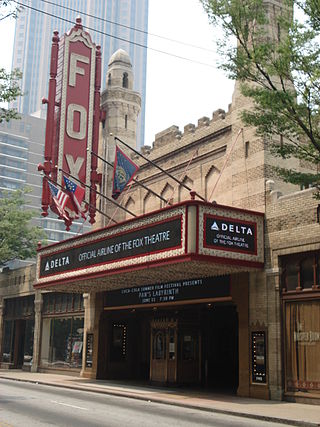
The arts in Atlanta are well-represented, with a prominent presence in music, fine art, and theater.
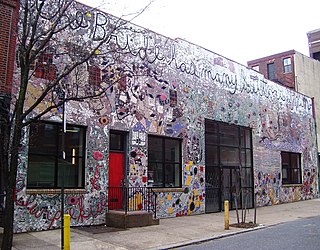
The Painted Bride Art Center, sometimes referred to informally as The Bride, is a non-profit artist-centered performance space and gallery particularly oriented to presenting the work of local Philadelphia artists, which presents dance, jazz, world, folk and electronic music, visual arts, theatre and performance art, poetry and spoken word performances. It is located at 5212 Market Street in the West Philadelphia neighborhood of Philadelphia, Pennsylvania,
CETA Artists Project (1977–1980) in New York City employed approximately 500 accomplished but underemployed artists in five programs, the largest of which was the Cultural Council Foundation (CCF) Artists Project. The project was funded under the Comprehensive Employment and Training Act (CETA) (1974–80) when more than 10,000 artists – visual, performing, and literary – were employed nationally. This was the largest number of artists supported by Federal funding since the Works Progress Administration of the 1930s.
Carin Kuoni is an American curator, writer, arts administrator, and director of The Vera List Center for Art and Politics at The New School in New York City, US. Kuoni believes that political consciousness has not fully vanished from cultural production, and that it is more subtly embedded in a broader range of publicly engaged art. Kuoni has a special focus on promoting art that re-engages the past. Kuoni is one of the founding members of REPOhistory, a group of artists that act as a medium for the development of public art projects based on a historical platform.

An art gallery is a room or a building in which visual art is displayed. In Western cultures from the mid-15th century, a gallery was any long, narrow covered passage along a wall, first used in the sense of a place for art in the 1590s. The long gallery in Elizabethan and Jacobean houses served many purposes including the display of art. Historically, art is displayed as evidence of status and wealth, and for religious art as objects of ritual or the depiction of narratives. The first galleries were in the palaces of the aristocracy, or in churches. As art collections grew, buildings became dedicated to art, becoming the first art museums.














